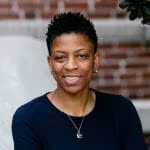Diversity is a crucial topic in today’s climate—whether in business, the workplace, or schools. These are the different aspects that inform how we view the world, such as socio-economic status, race, ethnicity, sexual orientation, gender, religious beliefs, political views, etc.
Diversity in education also means that every child brings their experiences, ideas, strengths, and weaknesses. For this reason, we cannot talk about inclusive education without addressing the reality of diversity in the classroom.
One way to do this is through the educators who directly impact the training and development of students in classrooms. So, we will explore the various ways of diversifying the Montessori teacher workforce to achieve more inclusive classrooms.
The opinions expressed in Montessori Life are those of the authors and do not necessarily represent the position of AMS.


